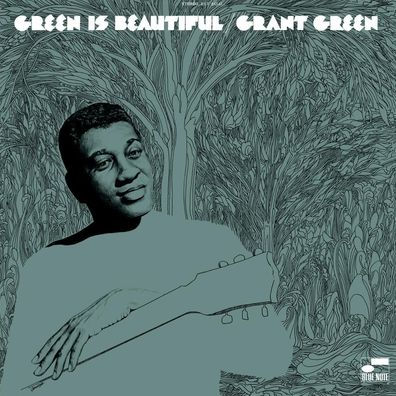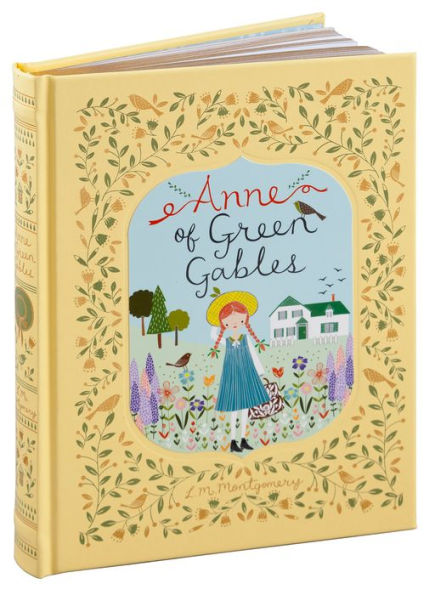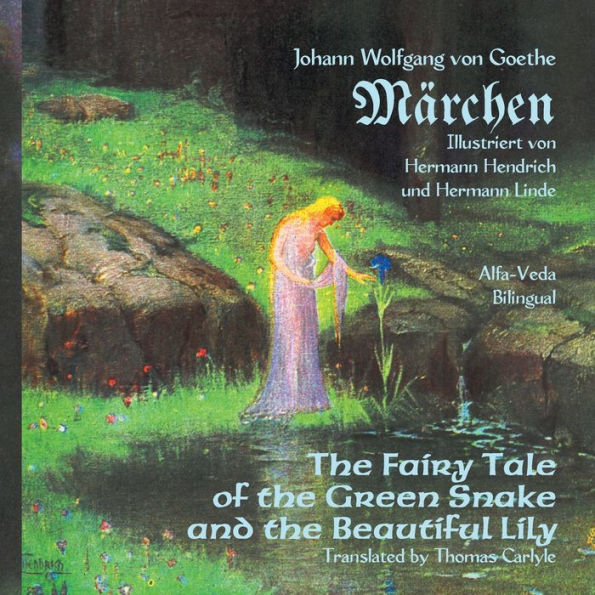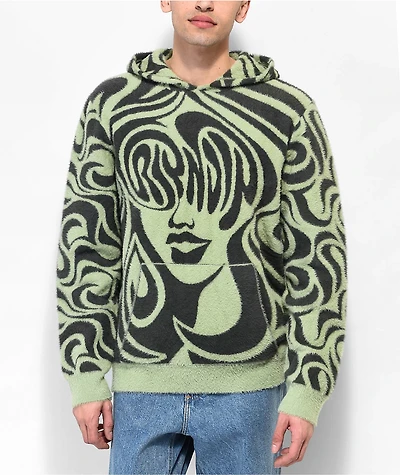Home
Green Is Beautiful
Barnes and Noble
Loading Inventory...
Green Is Beautiful in Bloomington, MN
Current price: $22.99


Green Is Beautiful in Bloomington, MN
Current price: $22.99
Loading Inventory...
Size: CD
The second album of
Grant Green
's thorough
jazz-funk
makeover,
Green Is Beautiful
finds the guitarist growing more comfortable with harder, funkier
R&B
than he seemed on the softer-hued
Carryin' On
. The switch from Fender Rhodes electric piano back to the more traditional Hammond organ certainly helps give the session a little extra grit, but it doesn't return
Green
to the land of
soul-jazz
by any means.
is still explicitly commercial and accessible to non-
jazz
audiences, and (purist objections notwithstanding) that's not necessarily a bad thing.
's take on
James Brown
's
"Ain't It Funky Now"
is one of the funkiest items in his rare-groove period; it may be chordally very simple, but the groove is tight and percolating, and
, tenor saxophonist
Claude Bartee
, and trumpeter
Blue Mitchell
all come up with hot, exciting solos. The album also benefits from
's discovery of composer and occasional organist
Earl Neal Creque
, who contributes two bright, slinky, horn-driven originals:
"The Windjammer,"
which became one of the signature tunes of
's late period, and
"Dracula."
They help give the album a more original voice, and indicate that
was actively making himself at home in his new musical environment, not just mixing dull originals with phoned-in covers of
pop
and
hits (as he and many other '70s
Blue Note
artists were accused of doing). Of course, there are still
covers present --
the Beatles
'
"A Day in the Life"
is a mellow, mid-tempo groove, and
Bacharach
"I'll Never Fall in Love Again"
doesn't stray far from the melody. Even if those aren't particularly distinctive, the remainder of
proves that
's reinvention as a
artist wasn't the misguided disaster it was initially made out to be. ~ Steve Huey
Grant Green
's thorough
jazz-funk
makeover,
Green Is Beautiful
finds the guitarist growing more comfortable with harder, funkier
R&B
than he seemed on the softer-hued
Carryin' On
. The switch from Fender Rhodes electric piano back to the more traditional Hammond organ certainly helps give the session a little extra grit, but it doesn't return
Green
to the land of
soul-jazz
by any means.
is still explicitly commercial and accessible to non-
jazz
audiences, and (purist objections notwithstanding) that's not necessarily a bad thing.
's take on
James Brown
's
"Ain't It Funky Now"
is one of the funkiest items in his rare-groove period; it may be chordally very simple, but the groove is tight and percolating, and
, tenor saxophonist
Claude Bartee
, and trumpeter
Blue Mitchell
all come up with hot, exciting solos. The album also benefits from
's discovery of composer and occasional organist
Earl Neal Creque
, who contributes two bright, slinky, horn-driven originals:
"The Windjammer,"
which became one of the signature tunes of
's late period, and
"Dracula."
They help give the album a more original voice, and indicate that
was actively making himself at home in his new musical environment, not just mixing dull originals with phoned-in covers of
pop
and
hits (as he and many other '70s
Blue Note
artists were accused of doing). Of course, there are still
covers present --
the Beatles
'
"A Day in the Life"
is a mellow, mid-tempo groove, and
Bacharach
"I'll Never Fall in Love Again"
doesn't stray far from the melody. Even if those aren't particularly distinctive, the remainder of
proves that
's reinvention as a
artist wasn't the misguided disaster it was initially made out to be. ~ Steve Huey
The second album of
Grant Green
's thorough
jazz-funk
makeover,
Green Is Beautiful
finds the guitarist growing more comfortable with harder, funkier
R&B
than he seemed on the softer-hued
Carryin' On
. The switch from Fender Rhodes electric piano back to the more traditional Hammond organ certainly helps give the session a little extra grit, but it doesn't return
Green
to the land of
soul-jazz
by any means.
is still explicitly commercial and accessible to non-
jazz
audiences, and (purist objections notwithstanding) that's not necessarily a bad thing.
's take on
James Brown
's
"Ain't It Funky Now"
is one of the funkiest items in his rare-groove period; it may be chordally very simple, but the groove is tight and percolating, and
, tenor saxophonist
Claude Bartee
, and trumpeter
Blue Mitchell
all come up with hot, exciting solos. The album also benefits from
's discovery of composer and occasional organist
Earl Neal Creque
, who contributes two bright, slinky, horn-driven originals:
"The Windjammer,"
which became one of the signature tunes of
's late period, and
"Dracula."
They help give the album a more original voice, and indicate that
was actively making himself at home in his new musical environment, not just mixing dull originals with phoned-in covers of
pop
and
hits (as he and many other '70s
Blue Note
artists were accused of doing). Of course, there are still
covers present --
the Beatles
'
"A Day in the Life"
is a mellow, mid-tempo groove, and
Bacharach
"I'll Never Fall in Love Again"
doesn't stray far from the melody. Even if those aren't particularly distinctive, the remainder of
proves that
's reinvention as a
artist wasn't the misguided disaster it was initially made out to be. ~ Steve Huey
Grant Green
's thorough
jazz-funk
makeover,
Green Is Beautiful
finds the guitarist growing more comfortable with harder, funkier
R&B
than he seemed on the softer-hued
Carryin' On
. The switch from Fender Rhodes electric piano back to the more traditional Hammond organ certainly helps give the session a little extra grit, but it doesn't return
Green
to the land of
soul-jazz
by any means.
is still explicitly commercial and accessible to non-
jazz
audiences, and (purist objections notwithstanding) that's not necessarily a bad thing.
's take on
James Brown
's
"Ain't It Funky Now"
is one of the funkiest items in his rare-groove period; it may be chordally very simple, but the groove is tight and percolating, and
, tenor saxophonist
Claude Bartee
, and trumpeter
Blue Mitchell
all come up with hot, exciting solos. The album also benefits from
's discovery of composer and occasional organist
Earl Neal Creque
, who contributes two bright, slinky, horn-driven originals:
"The Windjammer,"
which became one of the signature tunes of
's late period, and
"Dracula."
They help give the album a more original voice, and indicate that
was actively making himself at home in his new musical environment, not just mixing dull originals with phoned-in covers of
pop
and
hits (as he and many other '70s
Blue Note
artists were accused of doing). Of course, there are still
covers present --
the Beatles
'
"A Day in the Life"
is a mellow, mid-tempo groove, and
Bacharach
"I'll Never Fall in Love Again"
doesn't stray far from the melody. Even if those aren't particularly distinctive, the remainder of
proves that
's reinvention as a
artist wasn't the misguided disaster it was initially made out to be. ~ Steve Huey

![461 Ocean Boulevard [Green Vinyl] [Barnes & Noble Exclusive]](https://prodimage.images-bn.com/pimages/0602455262073_p0_v1_s600x595.jpg)
![Christine McVie [Bottle Green Clear Vinyl] [Barnes & Noble Exclusive]](https://prodimage.images-bn.com/pimages/0081227819392_p0_v1_s600x595.jpg)


![Greatest Hits [Green Vinyl] [Barnes & Noble Exclusive]](https://prodimage.images-bn.com/pimages/0792755661161_p0_v1_s600x595.jpg)
![Rumours [Forest Green Vinyl] [Barnes & Noble Exclusive]](https://prodimage.images-bn.com/pimages/0081227815578_p0_v2_s600x595.jpg)
![UTOPIA [Opaque Green Vinyl] [Barnes & Noble Exclusive]](https://prodimage.images-bn.com/pimages/0196588519314_p0_v5_s600x595.jpg)
![Paramore [Neon Green Vinyl] [Barnes & Noble Exclusive]](https://prodimage.images-bn.com/pimages/0075678617409_p0_v2_s600x595.jpg)

![Louis London [Translucent Green Vinyl] [Barnes & Noble Exclusive]](https://prodimage.images-bn.com/pimages/0602465687040_p0_v1_s600x595.jpg)






